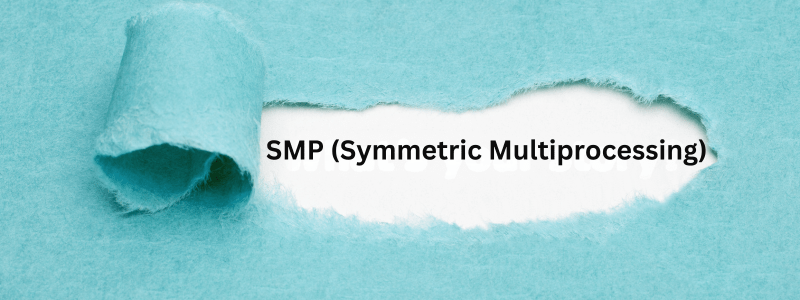
What is SMP? Have you ever wondered how your computer manages to handle multiple tasks simultaneously without breaking a sweat? The secret sauce often lies in something called Symmetric Multiprocessing, or SMP for short. Let’s dive into what SMP is all about and why it’s such a big deal in the tech world.
What is SMP
Definition of Symmetric Multiprocessing
Symmetric Multiprocessing is a method of using multiple processors to perform tasks in parallel within a single computer system. All processors share the same memory and operate under a single operating system, making them work symmetrically.
Key Characteristics of SMP Systems
- Shared Memory: All processors access a common memory space, which simplifies data sharing and communication.
- Equal Access: Each processor has equal access to I/O devices and memory, ensuring balanced performance.
- Single OS: A single operating system manages all the processors, simplifying system administration.
History of SMP
Early Developments
SMP’s roots trace back to the 1960s when the concept of using multiple processors in a single system began to take shape. Early systems were rudimentary and primarily used in research.
Evolution Over the Years
The technology saw significant advancements in the 1980s and 1990s, with the introduction of more sophisticated processors and operating systems capable of managing multiple CPUs efficiently.
How SMP Works
Basic Architecture
At its core, an SMP system consists of multiple processors connected to a single, shared memory. These processors are managed by the operating system, which distributes tasks among them.
Role of Processors
Each processor in an SMP system works on different tasks simultaneously. They communicate through shared memory, which allows for efficient coordination and task execution.
Memory Management in SMP
Memory management is crucial in SMP systems. The operating system must ensure that all processors have timely access to memory without conflicts, using techniques like cache coherence protocols.
Advantages of SMP
Improved Performance
With multiple processors working in parallel, SMP systems can handle more tasks at once, leading to better overall performance.
Scalability
SMP systems can be easily scaled by adding more processors, making them ideal for growing workloads.
Reliability
If one processor fails, others can continue to function, providing higher reliability and fault tolerance.
Disadvantages of SMP
Complexity
SMP systems are more complex to design and manage than single-processor systems, requiring sophisticated software and hardware solutions.
Cost
The additional processors and supporting infrastructure can make SMP systems more expensive.
Potential Bottlenecks
Shared memory and I/O devices can become bottlenecks, limiting the performance gains from additional processors.
SMP vs. Asymmetric Multiprocessing (AMP)
Key Differences
In AMP, processors are assigned specific tasks, whereas, in SMP, all processors can perform any task. This makes SMP more flexible but also more complex.
Use Cases for Each
SMP is commonly used in general-purpose computing environments, while AMP is often found in specialized applications where tasks can be distinctly separated.
SMP in Modern Operating Systems
Integration in Windows
Windows operating systems have robust support for SMP, enabling efficient use of multiple processors for enhanced performance.
Integration in Linux
Linux, with its open-source nature, allows for extensive customization and optimization for SMP environments, making it popular in server and supercomputing applications.
Integration in macOS
Apple’s macOS also supports SMP, providing smooth multitasking and performance improvements for Mac users.
SMP in Data Centers
Role in High-Performance Computing
SMP systems are a cornerstone of high-performance computing, enabling data centers to process large volumes of data quickly and efficiently.
Benefits of Data Center Operations
The scalability and reliability of SMP systems make them ideal for data centers, where uptime and performance are critical.
SMP in Everyday Devices

Smartphones
Modern smartphones use SMP to handle multiple applications and background processes, ensuring smooth user experiences.
Laptops and Desktops
SMP technology is also prevalent in personal computers, allowing for better multitasking and performance in everyday computing tasks.
Future of SMP
Emerging Trends
Advancements in processor technology and software optimization continue to drive the evolution of SMP, with trends like multi-core processors becoming more common.
Potential Innovations
Future innovations may include more intelligent task distribution algorithms and improved energy efficiency, making SMP even more effective.
Implementing SMP in Your Systems
Hardware Requirements
To implement SMP, you’ll need compatible hardware, such as multi-core processors and motherboards designed for multiple CPUs.
Software Considerations
Your operating system and applications must support SMP to take full advantage of multiple processors. Look for software with built-in SMP optimization.
Troubleshooting SMP Systems
Common Issues
Common issues in SMP systems include memory conflicts, processor synchronization problems, and performance bottlenecks.
Solutions and Best Practices
Regular system updates, proper configuration, and monitoring tools can help mitigate these issues and ensure smooth operation.
Conclusion
Symmetric Multiprocessing is a powerful technology that enables computers to perform multiple tasks simultaneously with improved performance and reliability. While it comes with challenges like complexity and cost, the benefits often outweigh the downsides, especially in environments where multitasking and scalability are essential.
FAQs
1. What is SMP in simple terms?
SMP, or Symmetric Multiprocessing, is a technology that allows multiple processors to work together within a single computer system, sharing the same memory and operating under one operating system.
2. How does SMP improve performance?
SMP improves performance by allowing multiple processors to handle different tasks simultaneously, making the system faster and more efficient.
3. Can SMP be used in all types of computers?
While SMP can be used in many types of computers, it is most effective in systems designed for multitasking and high-performance applications, such as servers and high-end desktops.
4. What are the main challenges of implementing SMP?
The main challenges include increased complexity, higher costs, and potential bottlenecks in shared memory and I/O devices.
5. What is the future of SMP technology?
The future of SMP technology looks promising with ongoing advancements in multi-core processors, improved task distribution algorithms, and enhanced energy efficiency, paving the way for more powerful and efficient computing systems.
For insights into the cutting-edge advancements shaping the future of technology, explore our detailed guide on LATEST AI TRENDS: ALL YOU NEED TO KNOW.
